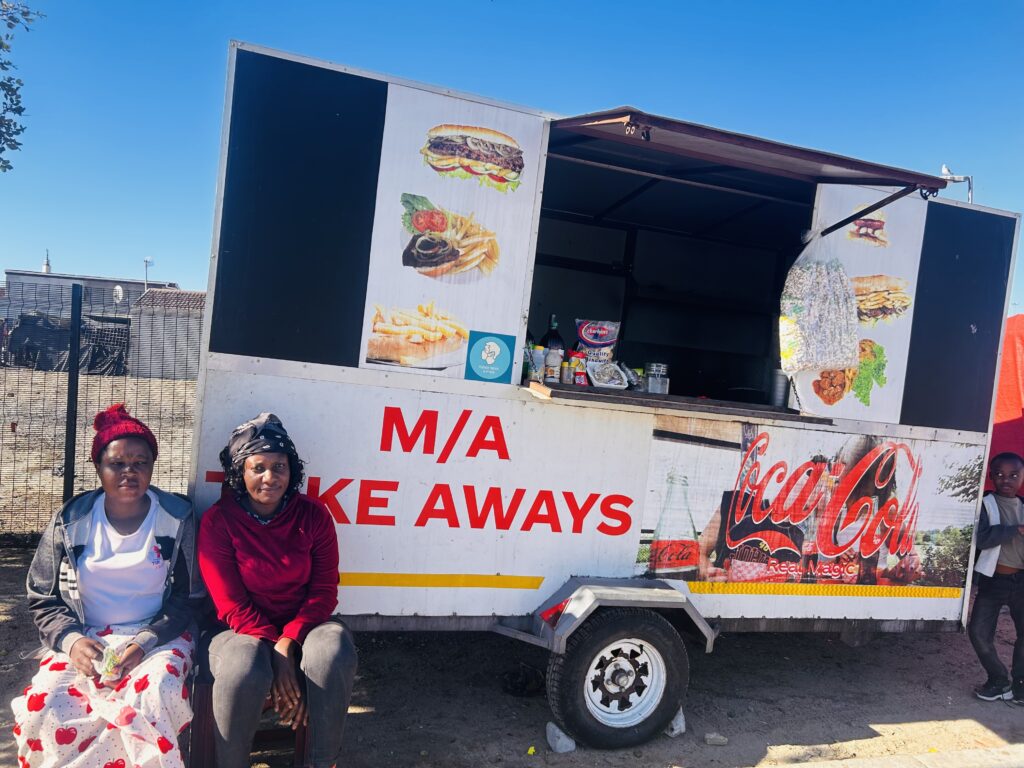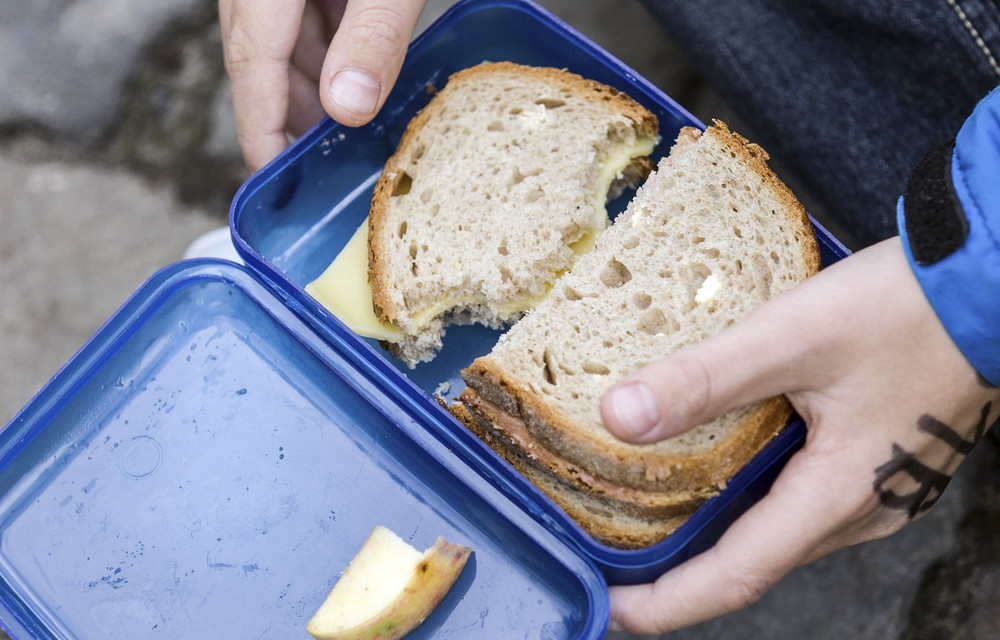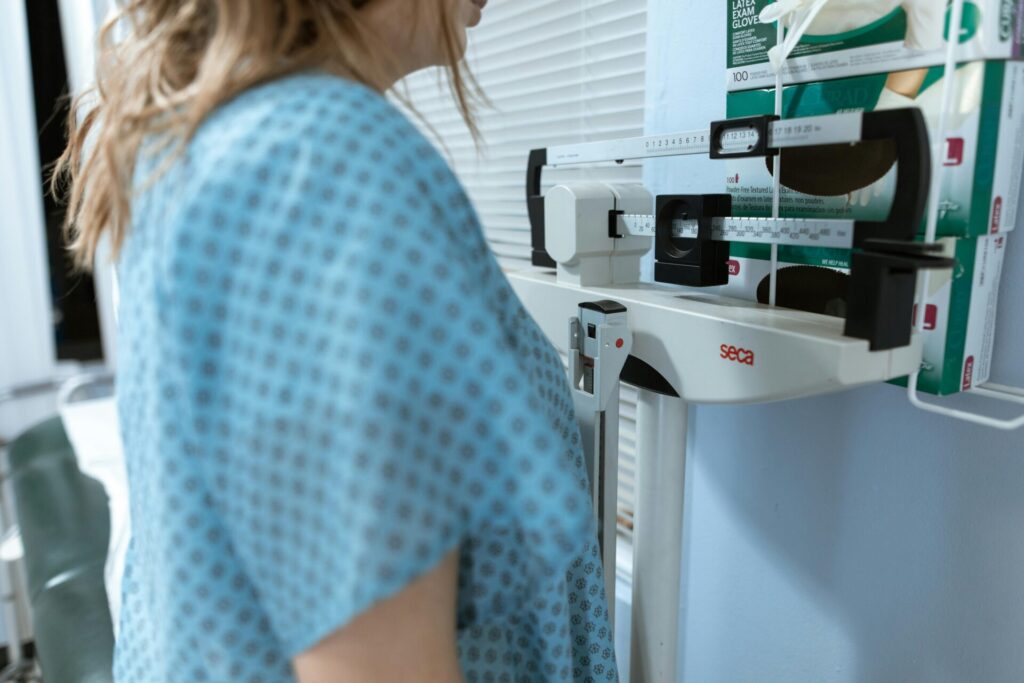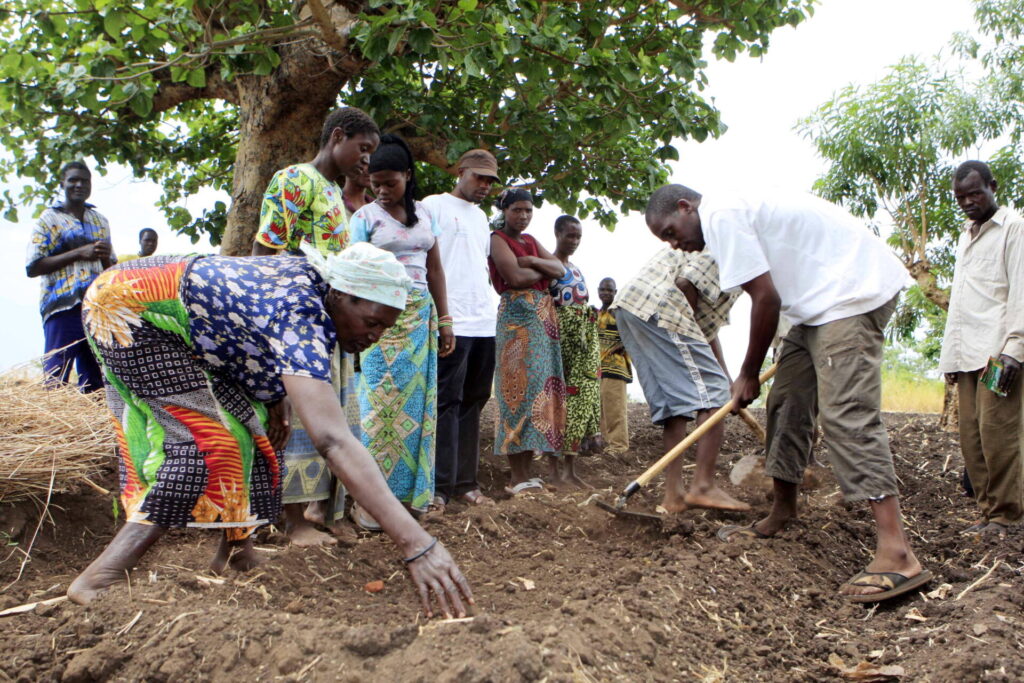- About one in five teens in South Africa are overweight or have obesity.
- Public health experts warn that, like elsewhere in the world, child obesity is setting the next generation up for developing serious health problems, such as diabetes, heart disease, high blood pressure and certain types of cancer later on in life.
- Eating high-fat, high-energy fast food often is part of the reason why we have an obesity epidemic on our hands, research shows.
- But changing policies to make cities healthier can help school kids eat better — and set them up for a healthier future. Cape Town is part of a project to do this.
In today’s newsletter, Sipokazi Fokazi explains how two cities are addressing obesity among children. Sign up.

Sinako Mbewu,* 12, hands over R25 to the woman on the other side of the counter, her brow glistening with sweat from standing behind the cooker all day in her tiny food truck.
Behind her, a queue of about 30 other children from her school, just a few metres away, snakes along the bustling Freedom Way, a main road in Joe Slovo Park in Milnerton, lined with street vendors who sell anything from fruit and vegetables to second-hand clothing and electronics.
Cars and minibus taxis with children from Marconi Beam Primary School, rush into the start of a hot, summer’s weekend in March.
It’s Friday, 1.30pm, in this seaside town, about 10 kilometres north of the Cape Town city centre.
Mbewu takes her vetkoek burger (R15) and can of Coke (R10) and walks down the road to join her friends in a sandy open space where they’re finishing off the meals they too bought from M/A Takeaways’ food truck.
“I come here three or four times a week,” Mbewu says. “The food tastes good and it’s cheap.”
When her mom, a security guard, works early shifts, she doesn’t have time to pack her two daughters lunch and, instead, gives them money for takeaways. “It’s convenient to buy takeaways, especially after our fridge broke down. When we had a fridge, my mom used to buy lunchbox items in bulk, but now she can’t as the food goes off quickly,” Mbewu explains.
M/A Takeaways’ owner, Brenda Magodi, says burgers, vetkoeks, fried chips, Russian sausages and fizzy drinks are her most popular items.
She’s just given the last boy in the queue his food and is putting away the leftover vetkoeks in a large bowl behind her and says: “We’re open from 7am so that we can serve those who need breakfast. Mornings and early afternoons, when the school comes out, are the busiest times.”
Food for thought
The meals these learners eat is a complete contrast from what their peers in Ecuador’s capital, Quito, have. In this Latin American city, the local municipality has banned the sale of unhealthy foods and sugary drinks such as fizzy sodas, sugar-sweetened juices and energy drinks, at some schools and replaced these items with nutritious, traditional foods, such as beans, corn, fruit and vegetables.

In a pilot project known as “Pilas con Vitaminas” (meaning: stacks of vitamins), 20 schools also prohibited the sale of sweetened drinks on or near their premises and replaced them with water fountains to help curb obesity among school children.
The World Health Organisation says a child has obesity when their weight-to-height ratio at a certain age is more than that of 95% of children in that age group.
This ratio, called the body mass index (BMI), is worked out by dividing someone’s weight (in kilograms) by the square of their height (in metres). (Although scientists say BMI is not the perfect way to tell if someone has a healthy weight, it’s practical, cheap and widely understood, which researchers say makes it a fairly accurate check.)
Because children are growing at different rates at different ages, and boys and girls don’t grow at the same pace, the BMIs for children are plotted on standard growth curves used to see if a child is growing well.
For example, the growth chart shows that for 12-year-old boys, a BMI of higher than 23.5 is a sign of obesity. So, if a boy of this age is 1.4m tall and weighs 48kg, his BMI is 24.5, which tells a health worker that the child likely has obesity.
Even though Mbewu doesn’t know how much she weighs or how tall she is, she’s chubby.
“My family has always called me sdudla (Zulu slang for “a big person”) because I’ve always been a chubby child. But my sister, on the other hand, is very slim.”
A growing problem
In the Western Cape, like in the rest of the country, about one in five teens like Mbewu are overweight or obese.
But the numbers are different for boys and girls, with the chance of being overweight or having obesity being, generally, higher in girls than in boys. Indeed, in a study from the Western Cape, results showed that almost 29% of girls weighed too much — more than double the number of boys of similar ages.
A big contributor to obesity is eating fast food, like what is sold at M/A Takeaways. Foods like these often have lots of fat, sugar, starch and additives like salt, flavourings or colourants (fast foods are also often called ultra-processed foods). This means that they have lots of energy (measured in calories), but few of the other nutrients your body needs to be healthy.
For instance, a vetkoek burger and a fizzy drink like what Mbewu bought, contain about 600 calories, mostly from starch, sugar and fat (according to a web-based food composition app). That’s close to a quarter of the total energy a teen girl needs in a day, but without other nutrients like fibre, vitamins, minerals and protein in the right proportions for healthy growth.
Compare that to a meal made up of a chicken sandwich, an apple and a small tub of plain yoghurt, which have about 387 calories — and a more balanced mix of nutrients such as protein, carbohydrates and fats, and adds fibre, vitamins and minerals too.
Better choices
Quito’s project is part of the Partnership for Healthy Cities, funded by Bloomberg Philanthropies, to which 73 cities belong. In March, members gathered in Cape Town (Cape Town is part of this network) to learn from each other how to deal with public health issues related to people’s lifestyle, such as high blood pressure, heart problems and diabetes.
Since the start of the school programme in 2017, more than 21 000 learners from the 20 schools in Quito have joined.
Although there isn’t formal data yet, Marysol Ruilova, a patient safety specialist from Quito municipality, says they “think the project has been a success [so far]”, although a proper study, which they’re busy setting up, will help them measure the real impact.
“We have also installed 20 water fountains, one at each school,” she says, which means children drink water instead of fizzy drinks with lots of sugar at school, and which health authorities say is a big part of why obesity is on the rise.
The Quito municipality is now developing a draft policy to help other cities roll out plans for curbing noncommunicable diseases such as diabetes, high blood pressure, heart problems, arthritis and certain cancers.
That’s the thing about obesity among teens. Research shows that children with obesity have a big chance of developing health problems like these later in life. This, scientists say, may be because obesity affects how almost every organ system in the body works. Immune function especially may be hampered, which means in people with obesity, their bodies may struggle to fight germs or manage inflammation.
“Healthy eating should not be the responsibility of young children only; as the government we need to do something to point them in the right direction. That’s why changing food policy is so important for us,” says Ruilova.
“If we provide young people with healthy options, chances are they’ll end up eating healthy as adults too.”
A tale of two cities
Despite being thousands of kilometres apart, Ruilova says Cape Town and Quito face the same problem: healthy food is far more expensive, and also harder to come by, than ready-to-eat fast food.
Take Cape Town.
If Mbewu wanted healthier food than the vetkoek and Coke, she could have opted for fruit from a nearby stall.
But the perceived value for money is an issue. For the R25 Mbewu paid for her vetkoek burger and Coke, she could have bought three apples, of R3 each, and three bananas (R5 each).
That’s not enough to keep her going the whole day, she says. “A takeaway is more filling than fruit. I can’t survive on [fruit only] for the whole day,” she tells Bhekisisa.
Research shows a good way to make healthy foods easier to come by for children is to roll out policies such as those of Quito in schools.
In an analysis of the impact of nutrition policies in more than 6 000 schools, in both high- and lower-income countries including the United States (US), United Kingdom, Sweden, Mexico and Brazil, researchers found that having such programmes in schools mostly made healthy food easier to come by, already within the first two years of being in place. This, they say, shows that school nutrition policies could lower childhood obesity.
A 2023 study that compared the BMIs of more than 14 000 school kids in the US before and after a 2010 law was passed to make school meals healthier, shows that children’s BMIs dropped markedly. The researchers say this a good indication that school meal programmes can work to curb child obesity.
Local is lekker
Natacha Berkowitz, an epidemiologist for the City of Cape Town, says that while the Western Cape education department (school policies fall under the education department, not the municipality) in Cape Town has not yet introduced plans similar to those in Quito, the City is using a $75 000 (about R1.5-million) grant from the Healthy Cities partnership to draw up plans that will make it easier for communities here to get nutritious food.
Although they’re still working on it, she says they have so far put together “a basket of evidence-based food policy options to promote a healthy food environment for residents”.
One such plan looks at rewarding informal traders, like Magodi, to sell healthier food choices.
“The City is consulting with [other] departments involved in upgrading informal trading spaces for vendors and environmental health,” she says, so that it will be easier for vendors to prepare and sell healthy food in such spaces.
For example, a review by researchers from the University of California, Davis in the US shows that helping traders to get licences for selling food and ensuring that meals are prepared safely make it easier for people to buy healthy food at the curb side.
At a bigger scale, things like taxing unhealthy foods can also help.
For instance, South Africa has had success with rolling out a sugar tax, which was introduced in 2018.
The levy is calculated based on the sugar content of a product, rather than the item’s total volume, and producers pay 2.1c for every gram of sugar per 100ml. (The first 4g of sugar is exempt from this tax.)
The idea behind the sugar tax is that because it’s a “duty at source” — meaning that it’s paid by the producer — manufacturers will put less sugar in their products to lower the amount of tax they pay. But price increases that result from “sin taxes” like these (for example, also for tobacco and alcohol) are usually passed on to the consumer, and so consumers will likely also buy less of the product, and then what they do buy has a lower sugar content to start with.
This is indeed what’s happened, research shows. Three years down the line, people in South Africa were buying 28% fewer sugary beverages and soon after the tax was introduced manufacturers had already started changing their recipes so that their products contain less sugar.
But Jane Battersby, a geographer at the University of Cape Town who analyses how people live in different spaces, says that while her city can learn from Quito and others that have either banned the sale of junk food and sugary drinks at schools or imposed high taxes on these products, this could prove challenging locally.
Adding restrictions on foods that are sold around schools could also make it difficult for people to earn a living.
“Here [in South Africa] we have many women eking out basic livelihoods by selling food through school fences. How do we manage the trade-offs?”
As one of the authors of a Unicef document on improving children’s diets, Battersby says it’s impossible to change children’s diets without understanding how the communities in which they grow up shape their food choices.
For example, she cautions, having little or unpredictable income, living in a house without a fridge or stove to store or cook food and not being able to afford electricity, often limit what people choose to eat.
Increasing child support grants, handing out food vouchers and restricting ads for unhealthy foods, have been shown to help people eat better and keep a healthier weight, Battersby says.
Back at the spot near M/A Takeaways where Mbewu and her friends have gathered, she’s finished her meal and starts walking the 1km back to her home, a one-roomed shack where she lives with her mother and sister.
She shifts her heavy school bag to the other hand as she walks and says: “I don’t think my eating habits are too bad. We eat a cooked meal with vegetables for supper every day. Cooking one meal is more practical for us as we are all at home in the evenings.”
*Not her real name
Sipokazi Fokazi is Bhekisisa's senior health news reporter.







